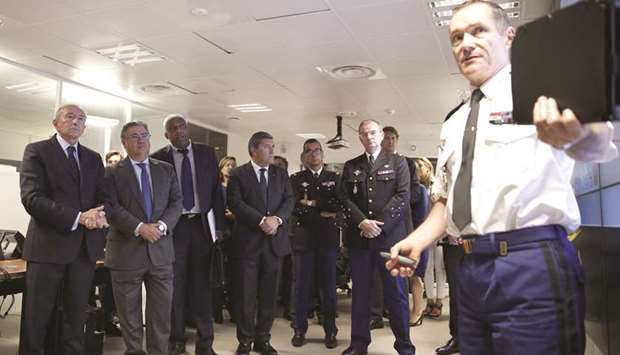The trick is to strike a balance between security and not overloading residents with restrictions.
“We’re looking at introducing (street) obstacles that could be mobile,” Joaquin Forn, who is in charge of home affairs in Catalonia, told reporters yesterday.
A van ploughed into crowds of holidaymakers and local residents on Barcelona’s crowded Las Ramblas boulevard last Thursday, killing 13 people.
Two others were killed during the driver’s getaway and in a separate attack in Cambrils.
The Barcelona rampage reignited a row over how cities can better prevent such attacks.
Militants have used trucks and cars as weapons to kill nearly 130 people in France, Germany, Britain, Sweden and Spain over the past 13 months.
German police, for example, placed concrete barriers in front of Cologne’s world famous gothic cathedral yesterday after reports that religious militants had sought to target Barcelona’s La Sagrada Familia church.
Catalan authorities may also erect some permanent barriers and turn some streets into pedestrian-only thoroughfares, Forn said.
The regional capital, which receives around 30mn visitors a year, is home to several landmarks designed by architect Antoni Gaudi, including the towering Sagrada Familia.
Forn added that some 10% more police would be deployed.
Investigators are still looking into whether the suspects behind last week’s attacks had links to France or Belgium and are examining their movements over recent weeks as they look for connections to possible cells elsewhere in Europe.
The car used in the attack in Cambrils, south of Barcelona, was caught on camera speeding in the Paris region days earlier.
“We are still trying to establish why they were in the Paris area,” French Interior Minister Gerard Collomb told reporters at a joint news conference in Paris with his Spanish counterpart yesterday.
Paris Prosecutor Francois Molins confirmed to reporters that two or three of the suspects had been in Paris on August 11 and 12 and stayed in a hotel in southern Paris.
French media has reported that at one point during the trip one of the militants bought a camera.
“Nobody can believe at this moment that this trip was carried out to buy a camera,” Molins told a news conference, referring to local media reports. “We have to find out what they had come to do in France.”
Molins declined to give further details, but said the investigation in France was focusing on who the suspects had met, where they had been and what they had bought.
Spanish Interior Minister Juan Ignacio Zoido said France and Spain would continue to reinforce border checks and step up information exchanges, including of passenger information in real time.
One of the suspects has said the leader of the militant group was an imam, Abdelbaki Es-Satty, who died a day before the Barcelona attack when a house the group was using to build bombs blew up.
Court officials in Spain’s Valencia region said yesterday that Spain had issued an expulsion order against Es-Satty after he served a four-year jail term for drug-trafficking but that this was annulled by a court in 2015 after Es-Satty appealed.
The judge at the time overturned the expulsion order partly because Es-Satty had employment roots in Spain which he said “shows his efforts to integrate in Spanish society”.
A dozen militants suspected of involvement in the plot were either killed or arrested.
On Tuesday a judge ordered two suspects jailed, one remain in police custody pending further investigation, and a fourth freed with conditions.



